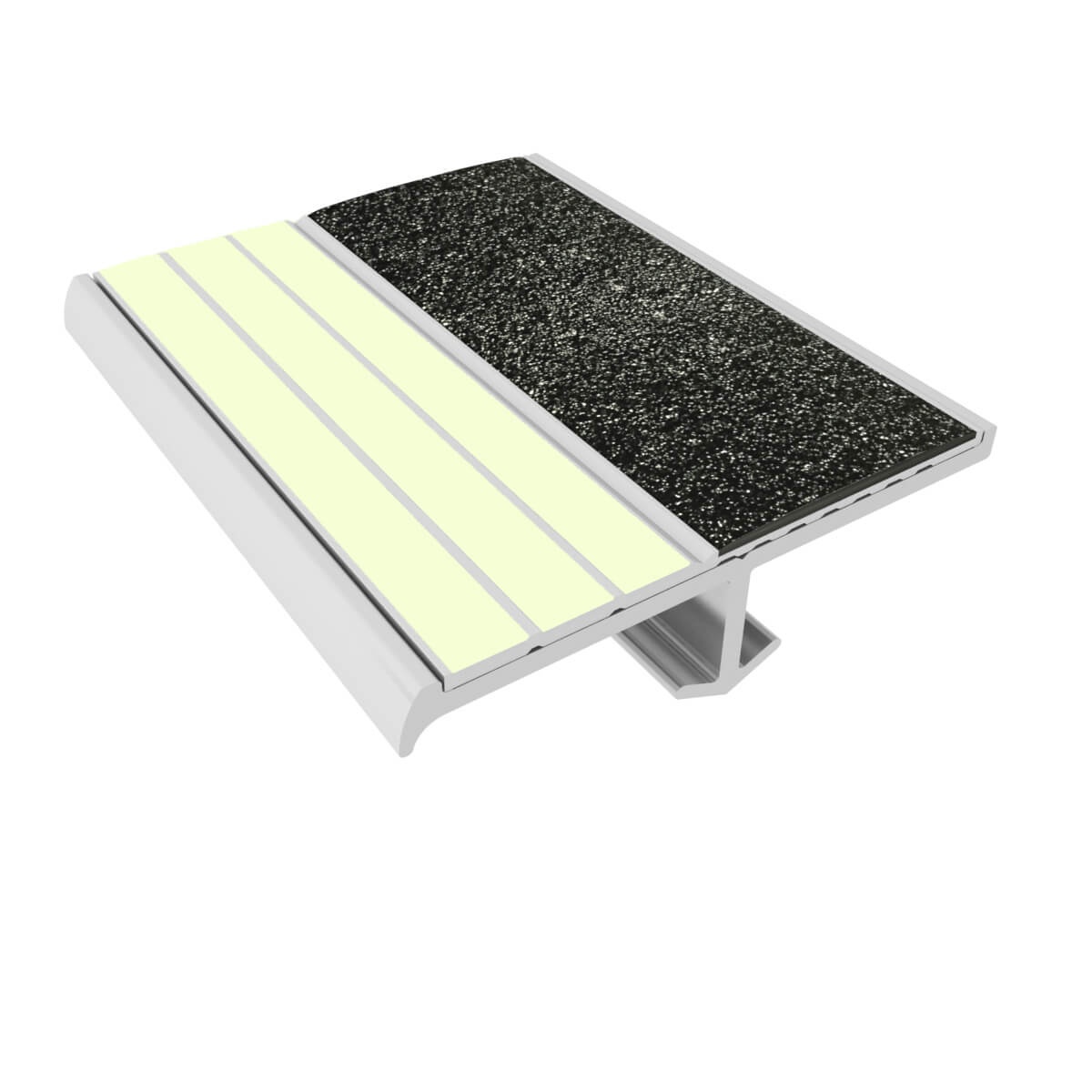Navigating public transit systems can be challenging for anyone, but for people with disabilities, especially visual impairments, it can feel daunting or even dangerous without proper accommodations in place. Thankfully, advancements in tactile technology are making public transportation increasingly more accessible.
Solutions like tactile walking surface indicators, anti-slip strips for stairs, and photoluminescent signage provide critical sensory cues that empower people with disabilities to utilize transit safely and independently. As cities strive to foster inclusion, integrating compliant tactile solutions into transportation infrastructure has become an essential priority.
Understanding Tactile Technology in Public Transit
Tactile solutions encompass textured walking surfaces, stair edge demarcations, and visual signage that convey important spatial information through touch and multiple sensory channels. These solutions tap into senses beyond sight to guide pedestrians with disabilities and enhance their mobility.
Key examples of tactile technology include:
Detectable Warning Surfaces - Textured ground indicator panels with truncated domes that provide underfoot cues at platform edges, boarding zones, etc.
Anti-slip strips for stairs- Grip-embedded stair edge strips that provide slip resistance and visibility of steps.
Photoluminescent Signage - Exit signs and path markers that illuminate in darkness for clear wayfinding.
Braille Signage - Textured signage with Braille characters that communicate information through touch.
With thoughtful integration of compliant tactile solutions, public transit environments can become intuitive and navigable for all users regardless of ability.
Benefits of Tactile Technology in Public Transportation
- Enhanced Safety: Tactile solutions like detectable warning strips, non-slip stair treads, and photoluminescent markings prevent accidents by alerting pedestrians to hazards and lighting egress paths.
- Accessibility: Solutions like Braille signage and detectable warning surfaces enable people with disabilities to gather spatial cues and navigate independently.
- Compliance: Integrating compliant tactile technology ensures public transit systems adhere to accessibility legislation.
- Rider Confidence: Tactile solutions build the confidence of people with disabilities to utilize public transit by creating accessible, safe spaces.
- Universal Design: Thoughtfully embedded tactile elements create an infrastructure that considers diverse needs, benefiting all users.
Some types of Tactile Solutions for Public Transportation
Armor Tile Tactile Systems
Armor Tile offers highly durable interior and exterior grade tiles engineered with metals & polymers. With maximum strength and weather resistance, Armor Tile solutions suit high-traffic transit environments.
Anti-Slip Strips for Stairs
Non-slip stair strips from Ecoglo provide illuminated stair edge contrast and slip resistance through grit coatings and photoluminescence. These durable treads adhere securely to stair edges, providing clear visibility and safe traction.
- Photoluminescent Non-Slip Strips - Illuminate stair edges in low light for visibility.
- Non-Photoluminescent Non-Slip Strips - Embedded silicon carbide grit provides an all-weather grip without illumination.
- Cast-In-Place Non-Slip Strips - Embedded into concrete stairs for maximal durability.
Tactile Walking Surface Indicators (TWSIs)
TWSIs like truncated domes and directional bars installed at platform edges, boarding areas, pedestrian crossings, and ramps provide detectable underfoot cues for people with visual disabilities.
- Truncated Domes - Warn of hazards like platform edges through distinctive dome texture.
- Directional Bars - Guide passengers along correct boarding paths through elongated ridges.
TWSIs from Access Tile, Advantage Systems, and Ecoglo are designed to meet Canadian accessibility standards like the AODA, CSA B651, and OBC, ensuring compliance.
The Importance of Proper Installation
While tactile technology offers immense benefits, proper installation is crucial for optimal effectiveness. Here are key installation guidelines:
Follow manufacturer instructions precisely, using recommended adhesives, anchors, drilling techniques, etc.
- Ensure no bumps, uneven joints, or lifted edges pose tripping hazards.
- Verify that required height and depth specifications, such as stair strip projection, are met.
- Check for proper spacing between tactile components like truncated domes.
- Only install outdoors-rated products in exterior settings.
- Test products for adequate slip resistance and photoluminescence brightness.
With certified installation professionals and rigorous QA, transit agencies can guarantee that tactile solutions provide the highest level of accessibility, safety, and code compliance.
Making Canadian Transit Universally Accessible
As Canada continues implementing important accessibility legislation like the Accessibility for Ontarians with Disabilities Act (AODA), integrating compliant tactile technology into public transportation infrastructure has become critically important. Tactile solutions create cognitively accessible spaces that consider diverse needs.
By consulting with disability advocacy groups, transit planners can thoughtfully incorporate compliant tactile elements throughout platforms, vehicles, waiting areas, and pedestrian routes. This universal design approach will help realize the vision of Canadian public transit that is navigable and safe for all.
FAQs
What are some examples of tactile technology used in public transportation?
Key examples include detectable warning surfaces, tactile walking surface indicators, stair edge nosings with non-slip grip and photoluminescence, and tactile signage.
How do tactile solutions make public transit safer for people with disabilities?
Solutions like photoluminescent markings, anti-slip stair treads, and warning surfaces alert passengers to potential hazards and help them navigate safely.
What regulations cover accessibility in public transportation in Canada?
Important regulations include the Accessibility for Ontarians with Disabilities Act (AODA), Ontario Building Code (OBC), and the CSA B651 standard.
How should tactile solutions be installed to ensure effectiveness?
Proper installation per manufacturer guidelines is crucial, including proper adhesive usage, eliminating tripping risks, verifying required depth/height specifications, and testing for adequate illumination and traction.
Tactile Solution Canada - Your Partner in Accessible Transit
As Canada's premier accessibility solutions provider, Tactile Solution Canada can guide transportation stakeholders in implementing compliant tactile systems that transform infrastructure into accessible and inclusive spaces.
Our product ranges from trusted brands like Armor Tile, Ecoglo, and Access Tile to meet diverse transit environment needs – exterior-grade tiles for platforms and stops as well as stair nosings and photoluminescent markings for indoor transit centers. We will recommend solutions tailored to each unique application.
Let's connect today to discuss how Tactile Solution Canada can become your trusted partner in creating universally accessible transportation that empowers people with disabilities to ride safely and with confidence.


No comments yet